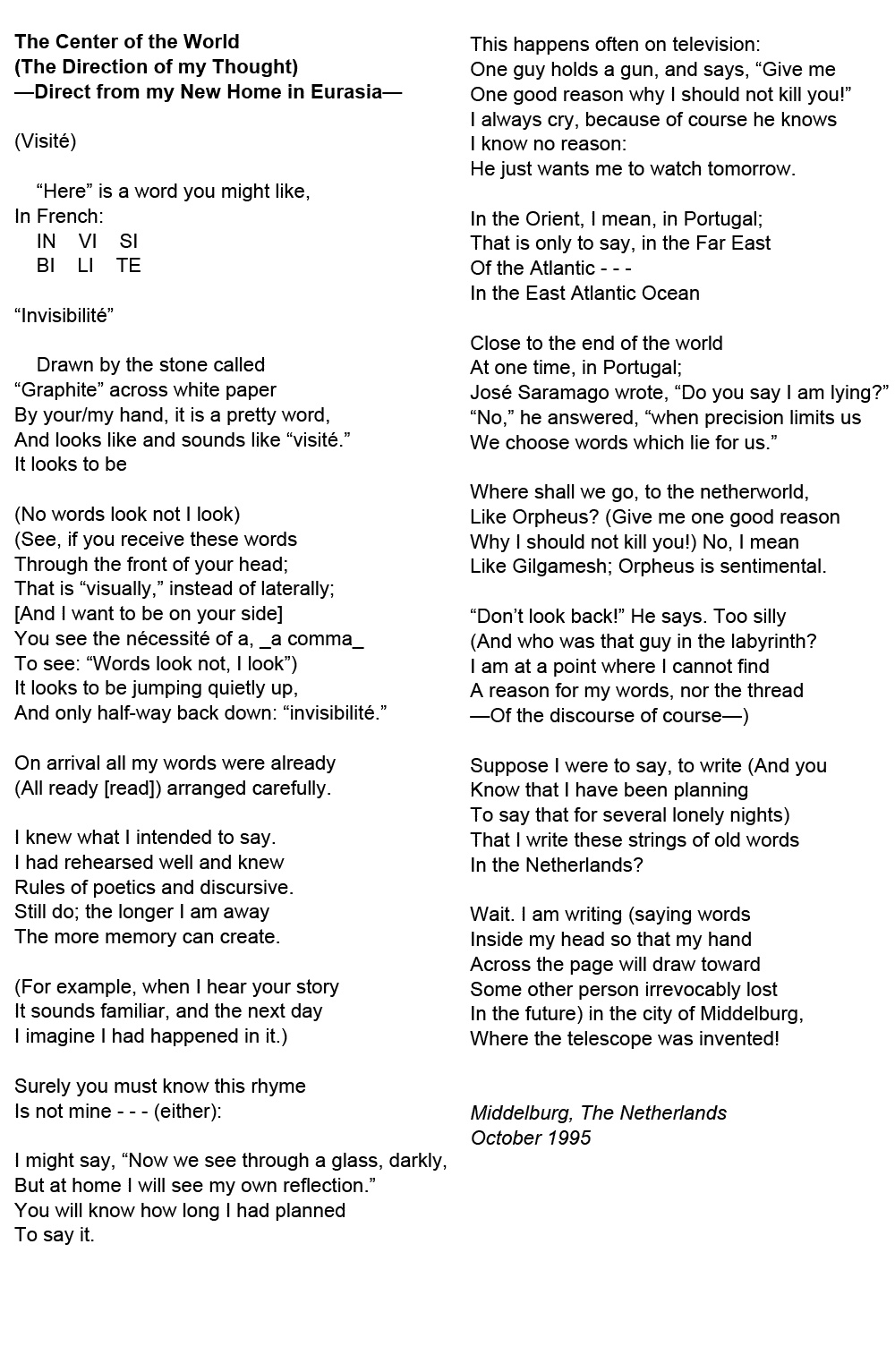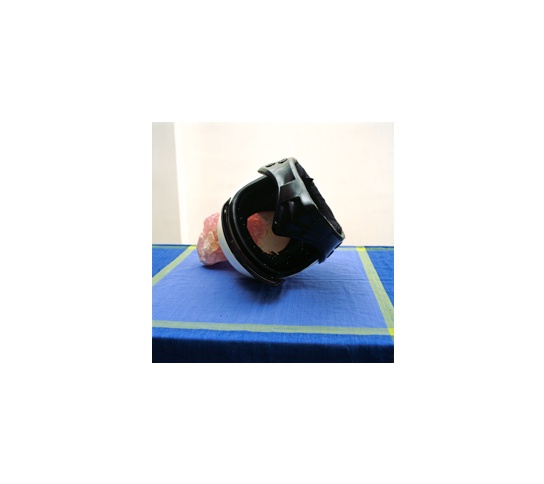Jimmie Durham is best known for his absurdist sculptural assemblages consisting of found objects and natural materials such as skulls, bones, feathers, timber and stone. Both his works of art and his poems do not have a clear message, instead they ‘communicate a feeling’ according to the artist. His work does reveal a critical attitude towards western views and prejudices. The relationship between people and nature furthermore is also an important starting point in his work. Perhaps that’s why the heroic epos of Gilgamesh frequently shows up in his work (for example in the poem below entitled The Center of the World).
Gilgamesh was a prince said to have founded the first city-state in the world. A giant wall was supposed to protect the city from the forest around it. By building this wall he did not only create a city where he could rule, but he also created ‘the wilderness’ and with that a classic contrast between culture and nature. Durham is against separating mankind from nature. He considers himself to be a part of nature, just like the Cherokee native Americans he feels related to.
Stones and minerals are frequently used in the works of art by Durham. A unique characteristic of these natural objects is that they belong to nature and to culture. A product from the earth, they are used as building blocks for our cities, but sculptures were traditionally carved out of stone too. This is one of the reasons why Durham is fascinated by stones. He presents them as sculptural forms, personifies them by giving them names and faces and he has even posed as a stone himself one time. In an essay Durham once said that his use of stones can be seen as a statement against ‘architecture’: “I want to do different things with stone to make stone light, to make it free of its metaphorical weight, its architectural weight. So I’ve been thinking of different ways to make stone work and to make stone move instead of making stone into an architectural element.” Attributing human characteristics to stones can also be seen as an attempt to let us look at stones from a different perspective.
The stone is also an important element in You can't make an omelet without breaking eggs (1998) and Paper Weight (1999), the two works of art exhibited at De Garage. In the first work, a helmet is penetrated by a piece of rose quartz, in the second work the stone is presented as a threatening destroyer. Similar to Durham’s poetry, his works of art conjure up feelings and ideas that are not easy to interpret. And perhaps that doesn’t matter. In an interview Durham once wondered why everyone wants to know what his work means, while nobody ever asks that question about music. It seems that music is what it is, and he concluded that it should be the same for art.



